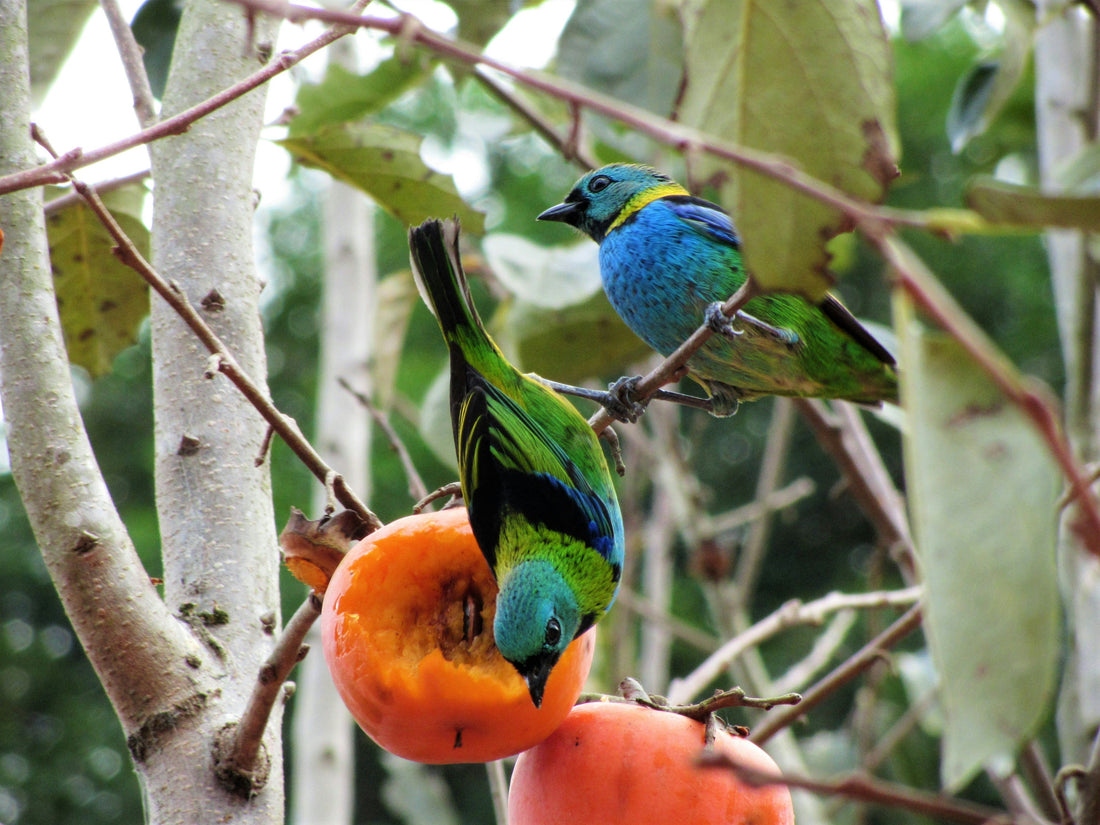
The Ultimate Smart Bird Feeder Buyer’s Guide: Features, Setup, and Tips for Tech-Savvy Bird Lovers
Share
For years, bird feeders have been a staple in gardens, balconies, and parks. But now, technology has taken this timeless pastime to a whole new level. With a smart bird feeder equipped with a camera, bird watching is no longer a game of patience and binoculars — it’s a live-streamed, high-definition experience you can enjoy anytime, anywhere.
If you’re considering buying one of these gadgets (or upgrading from a basic feeder), this guide will walk you through everything you need to know — from the key technical specs to setup tips and advanced features worth paying for.
1. Understanding How a Smart Bird Feeder Works
At its core, a smart bird feeder functions as both a feeding station and a wildlife camera. The feeder is designed to hold seeds or nectar, while a built-in camera captures close-up images and videos of every visitor. The camera connects wirelessly to your mobile device, usually via Wi-Fi, and streams footage through a dedicated app.
The result? You can watch birds in real time, receive alerts when a new species arrives, and even save photos to share on social media.
2. Key Features to Look For
When choosing a smart bird feeder, the details matter. Here are the top features to consider:
A. Camera Resolution
The sharper the image, the more detail you’ll see in your feathered guests.
-
Entry-level: 720p HD (suitable for casual watching)
-
Standard: 1080p Full HD (clear images, great for social sharing)
-
Premium: 2K–4K Ultra HD (crisp detail, even in zoomed-in shots)
B. Field of View
A wider lens captures more of the scene. Look for 120° or higher to ensure you catch all the action, not just the bird in the centre.
C. Night Vision
Infrared LEDs allow you to see nocturnal visitors like owls or nightjars. Even in pitch darkness, you can get clear monochrome images.
D. Motion Detection
A must-have for conserving battery and storage. Motion detection activates the camera only when movement is detected, sending instant alerts to your phone.
E. Connectivity
-
Wi-Fi (2.4GHz or 5GHz): Most common and reliable for home setups.
-
Bluetooth: Useful for initial pairing, but limited range.
-
4G LTE models: Great for remote locations without Wi-Fi, but may require a SIM card and data plan.
F. Storage Options
-
Cloud Storage: Access footage from anywhere; often requires a subscription.
-
Local Storage: SD cards store footage without ongoing fees, but can fill up quickly.
G. Power Supply
-
Rechargeable Battery: Easy to set up; lasts 1–4 weeks depending on usage.
-
Solar Panel Add-On: Extends battery life significantly; ideal for low-maintenance setups.
-
Direct Power: Continuous operation, but requires an outdoor power source.
H. Weatherproofing
Look for at least IP65 water resistance to handle rain, snow, and dust. Higher ratings are better if you live in extreme climates.
I. Bird Identification
Some apps include AI-based species recognition — perfect for beginners who want to learn names without flipping through a guidebook.
3. Step-by-Step Setup Guide
Even the most advanced bird feeders are surprisingly easy to set up. Here’s a basic process:
-
Charge or connect the feeder to power.
-
If it’s battery-operated, fully charge before installation.
-
Download the companion app.
-
Most brands provide free apps for iOS and Android.
-
Pair your feeder to Wi-Fi.
-
Place it within range of your router for a stable connection.
-
Mount the feeder.
-
Choose a safe, visible location — ideally near trees or shrubs.
-
Fill with seed.
-
Sunflower seeds attract the widest variety of birds.
-
Test the camera.
-
Check for glare, focus, and angle adjustments before leaving it unattended.
4. Troubleshooting Common Issues
Even the best devices can run into hiccups. Here’s how to fix the most common ones:
-
Weak Wi-Fi signal: Use a Wi-Fi extender or move the feeder closer to the router.
-
Blurry images: Clean the lens with a microfiber cloth and check focus settings.
-
No birds visiting: Experiment with different seed types or relocate the feeder to a quieter area.
-
Battery drains quickly: Enable motion detection and reduce video length in settings.
5. Advanced Features Worth Considering
If your budget allows, these extras can significantly enhance your bird-watching experience:
-
Two-Way Audio: Talk to visitors (or deter squirrels).
-
Dual Camera Angles: Capture both a close-up of the perch and a wide shot of the surrounding area.
-
Weather Data Integration: Some feeders display temperature, humidity, and sunrise/sunset times in the app.
-
Multiple Feeder Linking: Monitor different feeders around your property from one dashboard.
6. Maximising Your Smart Bird Feeder Investment
To get the most out of your feeder:
-
Regularly update the app to access new features.
-
Join online bird-watching groups to share footage and learn from others.
-
Experiment with seasonal feeds to attract migratory species.
-
Track patterns — some apps let you log visits and note peak activity times.
7. Who Will Love This Gadget?
A smart bird feeder is ideal for:
-
Tech enthusiasts who love integrating smart devices into their home.
-
Wildlife photographers wanting unique, close-up shots.
-
Families looking for an interactive, educational activity.
-
Urban dwellers who want to bring nature closer.
-
Retirees who enjoy bird watching without the strain of binoculars.
Final Verdict
A bird feeder with a built-in camera isn’t just a novelty — it’s a versatile, feature-rich tool that can provide endless hours of entertainment, education, and even scientific insight.
If you’re tech-savvy, you’ll appreciate the specs, the app integration, and the customisation options. And if you’re a bird lover, you’ll treasure the ability to see your visitors in stunning detail without disturbing their natural behaviour.
Whether you choose a budget-friendly model or invest in a top-of-the-line feeder with solar charging and AI recognition, the joy of having nature on demand is well worth it.
